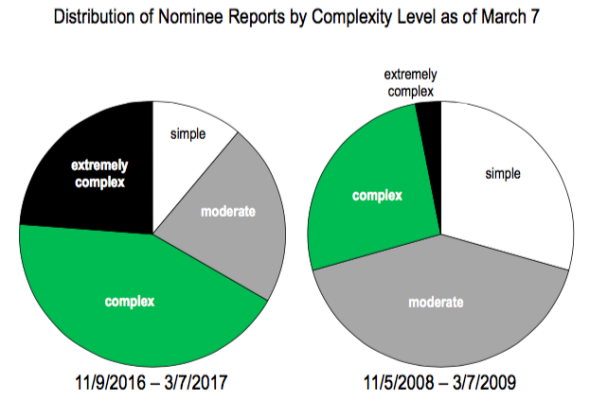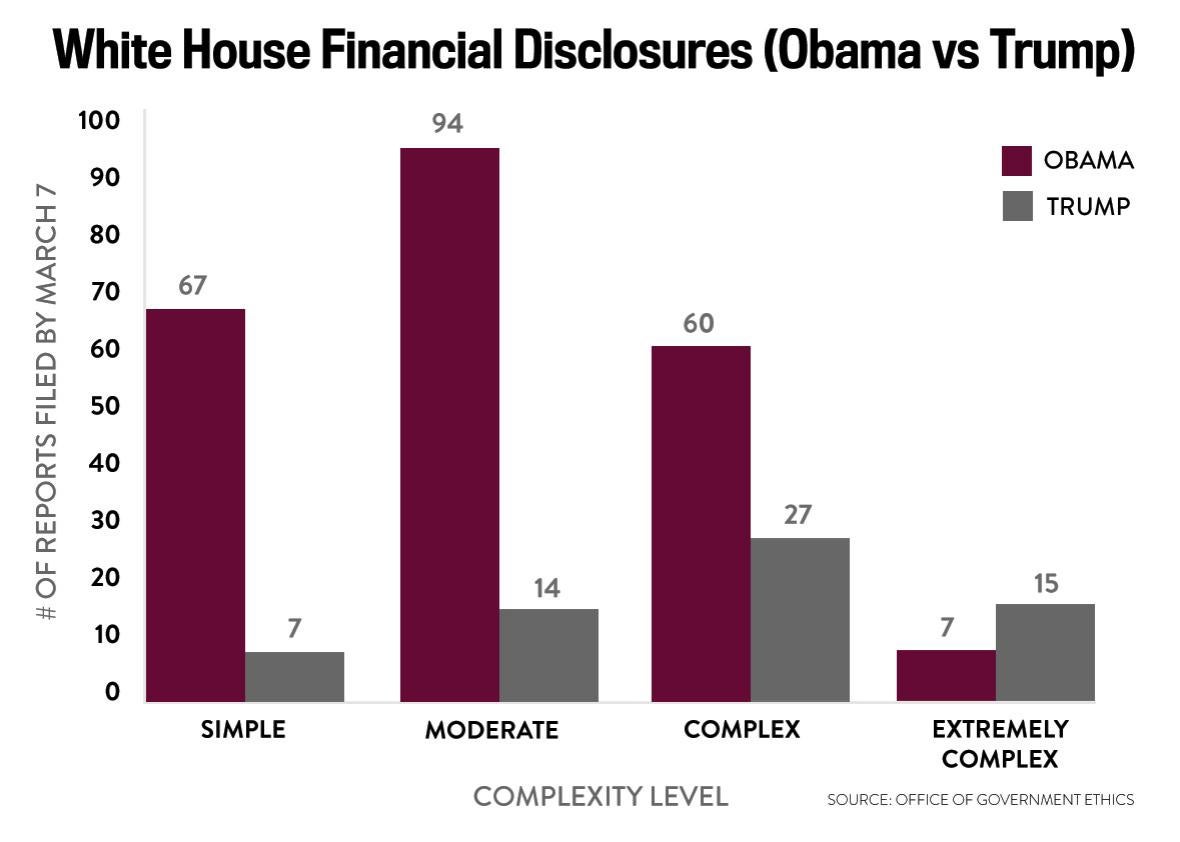Late this past Friday, the Trump administration began releasing financial disclosure forms for more than 100 of its highest-ranking officials. The White House’s preferred takeaway was easy to spot even before the documents had reached reporters’ inboxes. “I think it’s something that should be celebrated,” Sean Spicer said that afternoon in reference to the riches of the individuals who have followed the proudly wealthy Trump into government.
A second senior official sounded a similar note shortly thereafter. “I want to highlight the incredible complexity and the sophistication of the assets and the financial structures that this White House is going to present,” said the official, who briefed reporters ahead of the release on the condition he or she was not named. “These are incredibly successful individuals—very high net worth; very sophisticated, complex asset structures; numerous sub-LLCs, trusts and other items—all of which have to be worked through.” To drive the point home, the White House handed out a document consisting of two pie charts that compared how complex their filings were with the analogous initial filings of the Obama White House.

White House/OGE
“The Office of Government Ethics prepared a report analyzing the sophistication of this incoming White House versus the preceding administration, and they created a fairly helpful document,” the official said. “And you can see how the complexity relates from the folks that were in the previous administration to the complexity that we’ve been dealing with here.”
The problem, however, is that that’s only one reading of what the numbers say. They also make a very different point—one that the White House might not want to boast about. Namely, these are the filings of a White House that has left its director-level hires with almost no employees to direct.
Yes, the percentage of Trump’s initial hires with complex filings (as defined by OGE) was indeed higher than it was for Obama. But that’s mainly a result of the fact that Trump has been so much slower to actually stock his administration, meaning there are fewer executive branch employees to file the forms in the first place. According to OGE, the Obama administration submitted a total of 228 employee reports by March 7 of 2009; the Trump administration had submitted only 63 by that same date this year. If you compare the number of filings in each broad category used by the OGE, you see a very different picture than the one painted by the White House last week.

Slate
The OGE deems a filing “simple” if most of the assets are common investments, such as stocks or mutual funds, and then works its way up from there. A “complicated” filing can involve any number of unique assets, from book deals and patents to stakes in private equity funds or trusts. It should hardly come as a surprise that Trump’s decision to start hiring at the top and then hit pause would mean that his filers are more likely to have multiple homes and a more sprawling portfolio than those hires who would come in further down the chain of command. It’s as if a company bragged about how well-off its workers were—while failing to fill any of the positions outside of the C-suite.
There’s another problem: By citing this chart as Exhibit A, the White House is conflating the complexity of someone’s finances with the amount of his or her fortune. (Given the nesting doll of LLCs and trusts that is the Trump Organization, it’s not a surprise that the Trump administration would conflate financial complexity with financial success.) Still, if this is the metric the White House is choosing to trumpet, you’d think they’d at least want it to hold up to basic scrutiny.
To be fair, the OGE report paints an incomplete picture of Trump’s hiring, or lack thereof. Trump’s report, and the analogous one for Obama’s White House, covers only the opening month and a half of each administration, which means it was already out-of-date by the time the White House circulated it to reporters. But other metrics raise similar concerns. According to the nonpartisan Center for Presidential Transition, which tracks more than 500 key executive branch positions that require Senate confirmation, Trump had sent in a total of only 38 nominees as of March 20. That figure put him well behind Obama’s pace—94 by the same point in his first term—though still ahead of George W. Bush’s 35. (Note: The disclosures released Friday also include a number of White House employees that don’t require confirmation, such as Spicer and Kellyanne Conway.)
You might wonder why Trump’s team would be boasting about their wealth and asset complexity at all. Not only does it point to this White House’s failure to hire adequately, but it’s a reminder of the extent to which Trump has stocked his White House with his rich friends and family, a habit for which he has faced scorching criticism. Above all, these proud pie charts show that the president and his team are still firmly convinced that their status in the top .1 percent is aspirational—proof, to the American people, that they must be good people with great ideas. Whether voters agree that the complex assets of the wealthy are an admirable sign of political-appointee character, however, only time will tell.
